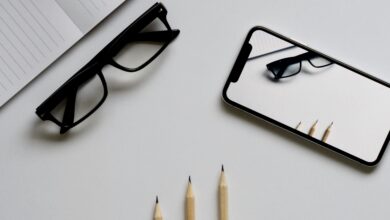Beginner’s Guide to Using Adobe Photoshop
Adobe Photoshop is a powerful and versatile tool that has become the gold standard for image editing and graphic design. For beginners, diving into Photoshop can seem daunting due to its extensive features and capabilities. This guide aims to simplify the process, providing a step-by-step approach to help you get started with Adobe Photoshop, harness its potential, and create stunning visuals.
Getting Started with Adobe Photoshop
Installation and Setup
- Purchase or Subscribe: Begin by purchasing Adobe Photoshop or subscribing to Adobe Creative Cloud, which offers access to Photoshop along with other Adobe software.
- Download and Install: Follow the prompts on the Adobe website to download and install Photoshop on your computer.
- Launch the Program: Once installed, open Photoshop by clicking on its icon.
Interface Overview
Upon launching Photoshop, you’ll be greeted by a complex interface. Here’s a breakdown of the main components:
- Menu Bar: Located at the top, the menu bar contains various options such as File, Edit, Image, Layer, and more.
- Tools Panel: Found on the left side, the tools panel includes essential tools for selection, painting, retouching, and more.
- Options Bar: Directly below the menu bar, this bar changes according to the selected tool, offering additional options.
- Panels: Located on the right, panels such as Layers, Properties, and Adjustments help manage and modify your work.
- Canvas: The central area where your images and designs are displayed and edited.
Basic Tools and Functions
Opening and Creating Files
- Open an Image: Go to File > Open and select an image from your computer.
- Create a New Document: Go to File > New. Set the dimensions, resolution, and background color, then click Create.
Layers
- Understanding Layers: Layers allow you to work on different parts of an image independently. Each layer can contain images, text, shapes, or adjustments.
- Creating Layers: Click the New Layer icon at the bottom of the Layers panel or go to Layer > New > Layer.
- Organizing Layers: Rename, group, and arrange layers for better organization by right-clicking on the layer in the Layers panel.
Selection Tools
- Marquee Tool: Select rectangular or elliptical areas. Found in the Tools panel.
- Lasso Tool: Freehand selection. Ideal for irregular shapes.
- Quick Selection Tool: Automatically selects similar pixels. Great for quick, rough selections.
- Magic Wand Tool: Selects areas based on color similarity.
Basic Editing Techniques
Cropping and Resizing
- Crop Tool: Found in the Tools panel, the Crop Tool allows you to trim and straighten an image.
- Image Size: Go to Image > Image Size to adjust the dimensions and resolution of your image.
Adjustments
- Brightness and Contrast: Go to Image > Adjustments > Brightness/Contrast to modify the image’s light and dark areas.
- Levels: Found under Image > Adjustments > Levels, this tool helps correct the tonal range and color balance.
- Curves: Go to Image > Adjustments > Curves for more precise control over the tonal range.
Retouching Tools
- Healing Brush Tool: Repairs imperfections by blending surrounding pixels.
- Clone Stamp Tool: Duplicates part of an image to another area. Useful for removing objects.
- Spot Healing Brush Tool: Quickly removes blemishes and small imperfections.
Adding Text
- Text Tool: Select the Text Tool from the Tools panel. Click on the canvas and type your text. Use the Options Bar to customize the font, size, color, and alignment.
Advanced Techniques for Beginners
Layer Masks
- Creating a Layer Mask: Add a mask to a layer by clicking the Add Layer Mask icon at the bottom of the Layers panel.
- Using Layer Masks: Paint on the mask with black to hide parts of the layer and white to reveal them. Layer masks allow for non-destructive editing.
Adjustment Layers
- Creating Adjustment Layers: Go to Layer > New Adjustment Layer and select the desired adjustment (e.g., Hue/Saturation, Color Balance).
- Benefits: Adjustment layers apply changes without altering the original image, making edits reversible.
Filters
- Applying Filters: Go to Filter in the menu bar and choose from a variety of effects such as Blur, Sharpen, Distort, and Artistic.
- Smart Filters: Convert your layer to a Smart Object before applying filters for non-destructive editing.
Tips and Tricks
- Keyboard Shortcuts: Learn and use Photoshop’s keyboard shortcuts to speed up your workflow. For example, pressing “Ctrl + S” (Windows) or “Cmd + S” (Mac) saves your work.
- History Panel: Use the History panel to revert to previous states of your project. This is helpful for undoing multiple actions.
- Experiment: Don’t be afraid to experiment with different tools and settings. Photoshop’s versatility means there are often multiple ways to achieve the same result.



